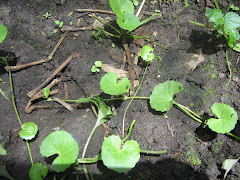
Vernacular names:-
Sanskrit, Sigru ; Hindi, Sahinjan ;Sinhalase, Murunga English,Horseradish tree; Bengali, Sojna; Nepalase, Sobhanjan; Japanase, Wasabinoki; French, Moronguier; Unanai,Sahinjan; Tamil, Murungai.
Parts used:-
Bark, roots, flowers, leaves, seeds and gum.
Sanskrit, Sigru ; Hindi, Sahinjan ;Sinhalase, Murunga English,Horseradish tree; Bengali, Sojna; Nepalase, Sobhanjan; Japanase, Wasabinoki; French, Moronguier; Unanai,Sahinjan; Tamil, Murungai.
Parts used:-
Bark, roots, flowers, leaves, seeds and gum.
Chemical constituents:-
-Bark contains a white crystalline alkaloid, two resins(one soluble and the other insoluble in ammonia), an inorganic
acid, mucilage(gum), and ash (8%).
-Seed husked on a low pressure yield a clear, limpid, almost colourless fixed oil known as beni or moringa oil. It contains 60% of liquid oil and 40% of white solid fat. Constituents of moringa oil are myristic acid (7.3%), palmitic acid (4.2%), oleic acid (65.8%), stearic acid (10.8%), behenic acid (8.9%) and lignoceric acid (3%).
-Alcoholic extract of fresh roots exhibit a strong antibiotic activity due to "ptergospermin" which is a reddish brown active oil.
-Pods and leaves were found to be rich in vitamin C content. The leaves yielded amino acids such as aspartic acid, glutamic acid, serine, glycine, threonine, alanine, valine, leucine, isoleucine, histidine, lysine, arginine, trytophan, cystine, methionine and carothene.
Pharmacological action:-
(Scientifically proven)
Generally: Antipasmodic, stimulant, expectorant and diuretic.
Bark: emmenagogue and even abortifacient
Flowers: stimulant, tonic, diuretic and useful to increase the flow of bile
Leaves and stem bark (juice): exhibit antibacterial and antitubercular activity
Root bark: antiviral effect against vaccinia virus, exhibit anti inflammatory and
analgesic activity
* Ethanolic extract of the whole plant showed anticancer activity against human epidermoid carcinoma of nasopharynx in tissue culture and lymphocytic leukemia in mice.
* Ethanolic extract of the whole plant showed anticancer activity against human epidermoid carcinoma of nasopharynx in tissue culture and lymphocytic leukemia in mice.






No comments:
Post a Comment